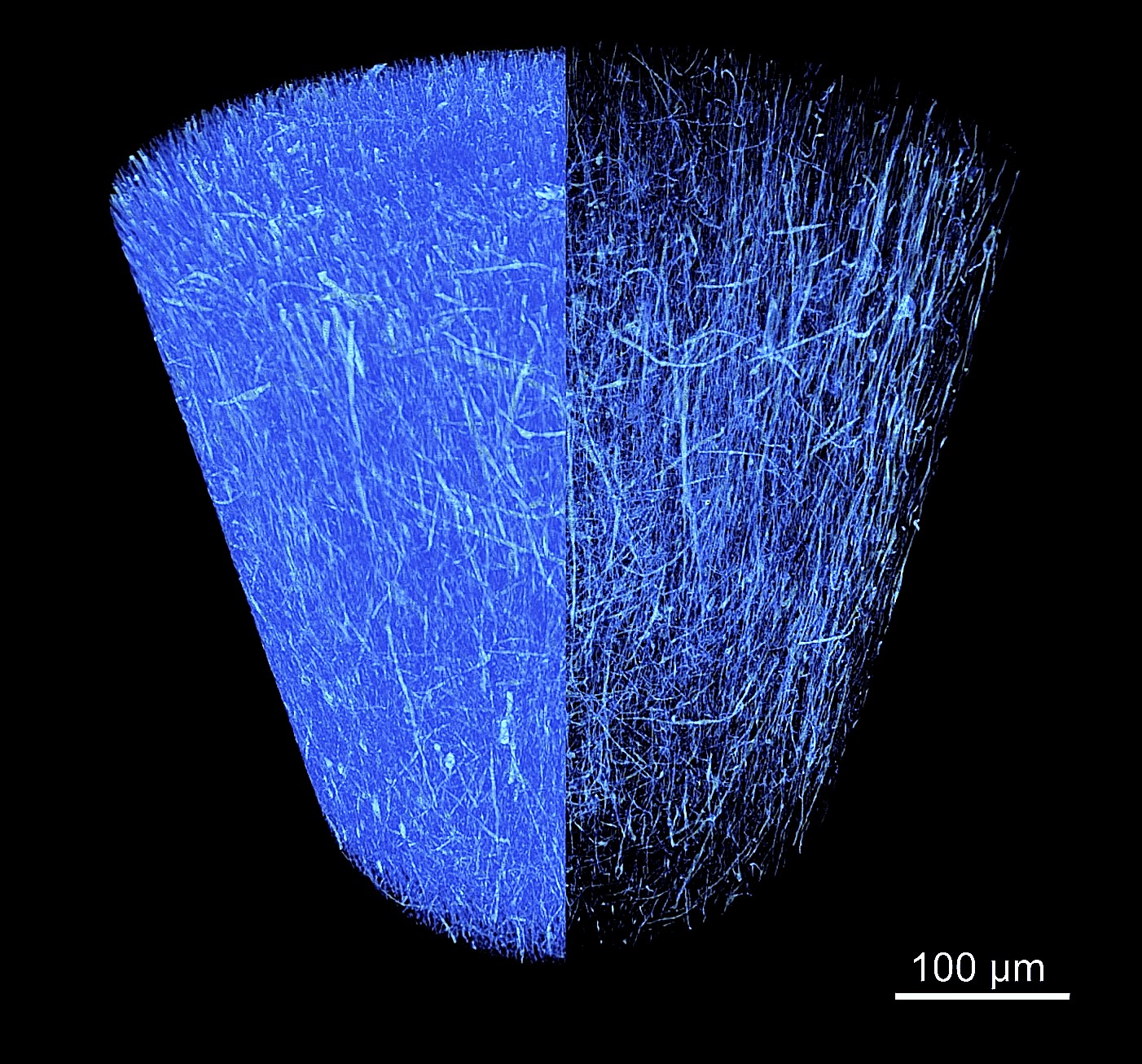
A. Sensini, G. Tozzi, Looking at the fibers, Imaging Competition finalist, Royal Microscopical Society - ToScA 2017, Portsmouth (UK) Many thanks to Zeiss Global Centre of the University of Portsmouth for the acquisition of the image
This patented invention refers to a ‘scaffold-type’ structure designed to favour the recovery of damaged tendon and ligament tissue. The scaffold can replace and/or enable tissue regeneration by simulating mechanical support, as well as morphological and physiological characteristics provided by the original undamaged tissue.
This device can be inserted in the human body and it is subsequently colonized by the patient’s cells, which then begin to replicate and to regenerate damaged tissue and fully restore the original structure. The support gradually degrade over time as new tissue is constructed. The selection of different scaffold material allows for the use of a non-reabsorbable structure that can be used for full and permanent tendon or ligament tissue replacement.
This innovation was developed from in-house research activities from the University of Bologna with a trans-departmental collaboration. The inventors include Alberto Sensini, Luca Cristofolini, Juri Belcari and Andrea Zucchelli from the Department of Industrial Engineering, and, Chiara Gualandi and Maria Letizia Focarete from the Department of Chemistry.
On interviewing Alberto Sensini - “We have developed an implantable device that can accurately reproduce the multiple and complex layers of tissue aggregation found in tendons and ligaments, but also of those found in muscular and nervous tissues as well.” Sensini continues - “With the use of electrospinning, a technology that allows for the production of fibers with nanometric diameters, we have managed to develop an innovative method of scaffold production which accurately simulates all components that constitute a human or animal tendon or ligament. The device is biocompatible, biodegradable, and re-absorbable. Moreover, it has a structure that perfectly resembles the human tissue in its anatomical features and mechanical properties, allowing for total replacement or repair of damaged tissues to achieve full original functionality.”
“To date” - concludes Sensini – “there is no device on the market that can effectively replace or regenerate these tissues, nor are there surgical tools or operative techniques that can accurately simulate human or animal tendon or ligament functions. Unlike bone tissue for example, tendons and ligaments have a highly complex structure rendering the replication of this tissue a significant challenge, until now. Consequently, we strongly believe that this invention is a remarkable step forward in the treatment of muscular, nervous, tendinous and ligamentous injuries. We predict this technology will have significant impact on surgical and biomedical fields, prosthetics research, manufacturers, users and patients. The technology is now in an advanced prototype phase, thanks to close collaborations with top universities and researchers in the fields of X-ray tomography, such as Dr. Gianluca Tozzi (Director of the Zeiss Global Centre of the University of Portsmouth, UK), and in human cell culture, such as Dr. Gwendolen Reilly (Institute for the in silico Medicine, at the University of Sheffield, UK). “Furthermore, we are strongly committed to engaging with companies and the private sector stakeholders that are interested in supporting or collaborating with us for the further development of this technology”
In 2018, the scaffold was presented at Biovaria, an international event in Munich (Germany) bringing together the best European scientists, technology transfer professionals, investors and representatives of the biopharmaceutical industry. The innovation was also presented at the World Congress of Biomechanics in Dublin (Ireland), receiving much attention and positive response. These public events have confirmed both the scientific validity of this technology as well as its very promising commercial opportunities that the University of Bologna is very much looking forward to developing in the future.





 A unique international forum for public research organisations and companies to connect their external engagement with strategic interests around their R&D system.
A unique international forum for public research organisations and companies to connect their external engagement with strategic interests around their R&D system.